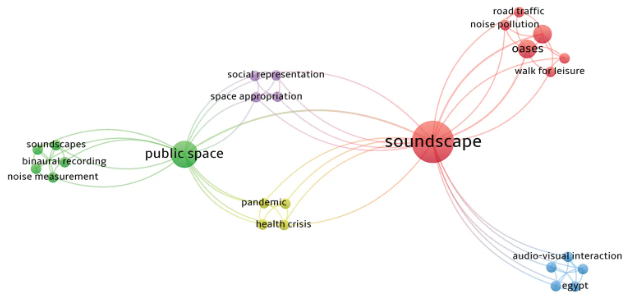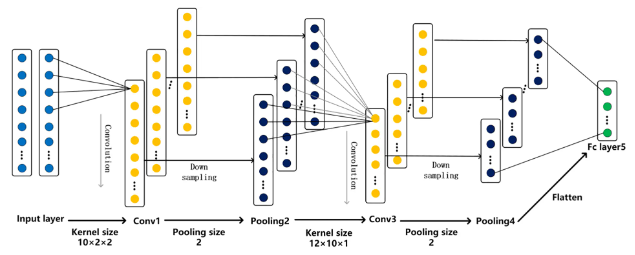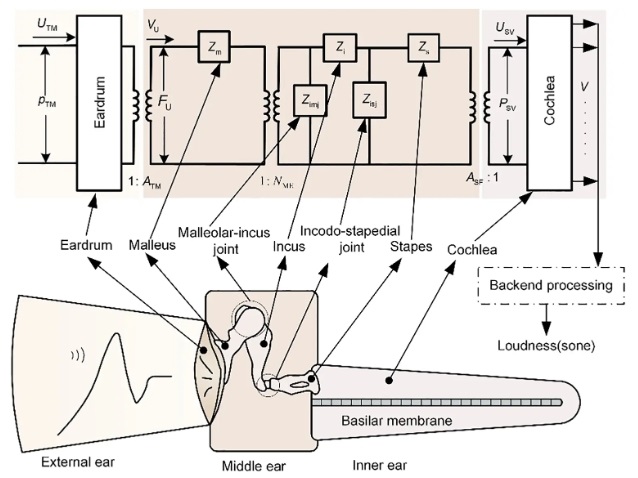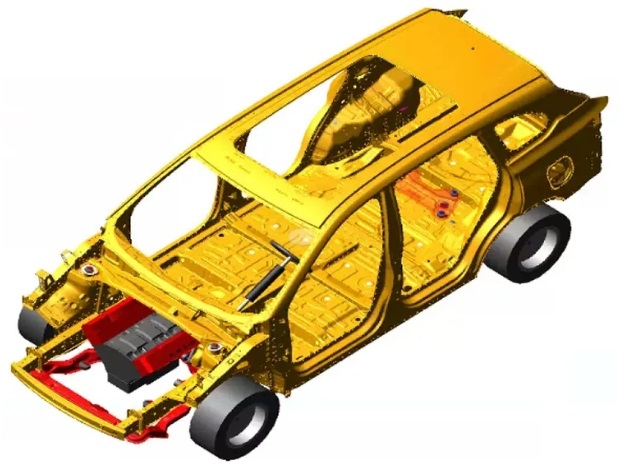Identification of vehicle suspension shock absorber rattle noise based on wavelet packet feature fusion and GWO-LSTM
Abstract
With the advancement of pure electric vehicles, the issue of rattle noise in suspension shock absorbers has increasingly become a critical factor affecting vehicle comfort. This paper proposes a method for rattle noise recognition based on wavelet packet feature fusion and the grey wolf optimizer-long short-term memory (GWO-LSTM) model, aimed at improving the accuracy and efficiency of rattle noise detection. The vibration signals of the shock absorbers are decomposed by wavelet packet decomposition (WPD), followed by extraction of wavelet packet energy (WPE) and wavelet packet fuzzy entropy (WPFE) features and feature fusion. Subsequently, the GWO algorithm is employed to optimize the hyperparameters of the LSTM model, enhancing classification performance. The results demonstrate that, compared to traditional methods, the GWO-LSTM model significantly improves classification accuracy and training efficiency, achieving an accuracy rate of 97.85%, particularly excelling in the recognition of both slight and serious rattle noise. This study provides an efficient and reliable solution for the automated evaluation of shock absorbers’ rattle noise.
References
[1]Zhu H, Zhao J, Wang Y, et al. Improving of pure electric vehicle sound and vibration comfort using a multi-task learning with task-dependent weighting method. Measurement. 2024; 233: 114752. doi: 10.1016/j.measurement.2024.114752
[2]Hua X, Thomas A, Shultis K. Recent progress in battery electric vehicle noise, vibration, and harshness. Science Progress. 2021; 104(1).
[3]Fan D, Dai P, Yang M, et al. Research on Maglev Vibration Isolation Technology for Vehicle Road Noise Control. SAE International Journal of Vehicle Dynamics, Stability, and NVH. 2022; 6(3): 233–245. doi: 10.4271/10-06-03-0016
[4]Huang HB, Li RX, Huang XR, et al. Identification of vehicle suspension shock absorber squeak and rattle noise based on wavelet packet transforms and a genetic algorithm-support vector machine. Applied Acoustics. 2016; 113: 137–148. doi: 10.1016/j.apacoust.2016.06.016
[5]Benaziz M, Nacivet S, Deak J, Thouverez F. Double Tube Shock Absorber Model for Noise and Vibration Analysis. SAE International Journal of Passenger Cars-Mechanical Systems. 2013; 6(2): 1177–1185. doi: 10.4271/2013-01-1912
[6]Huang HB, Li RX, Yang ML, et al. Evaluation of vehicle interior sound quality using a continuous restricted Boltzmann machine-based DBN. Mechanical Systems and Signal Processing. 2017; 84: 245–267. doi: 10.1016/j.ymssp.2016.07.014
[7]Huang Y, Li D. Subjective discomfort model of the micro commercial vehicle vibration over different road conditions. Applied Acoustics. 2019; 145: 385–392. doi: 10.1016/j.apacoust.2018.10.028
[8]Benaziz M, Nacivet S, Thouverez F. A shock absorber model for structure-borne noise analyses. Journal of Sound and Vibration. 2015; 349: 177–194. doi: 10.1016/j.jsv.2015.03.034
[9]Zheng T, Zheng Y, Gong X, et al. Diagnosis and analysis of twin-tube shock absorber rattling noise in electric vehicle. Vibroengineering Procedia. 2022; 42: 57–63. doi: 10.21595/vp.2022.22606
[10]Bogema D, Goodes P, Apelian C, Csakan M. Noise path analysis process evaluation of automotive shock absorber transient noise. Available online: https://doi.org/10.4271/2009-01-2091 (accessed on 20 October 2024)
[11]Huang HB, Huang XR, Wu JH, et al. Novel method for identifying and diagnosing electric vehicle shock absorber squeak noise based on a DNN. Mechanical Systems and Signal Processing. 2019; 124: 439–458. doi: 10.1016/j.ymssp.2019.01.053
[12]Michalakoudis I, Thite AN. Experimental identification of shock absorber knocking noise using various input waveforms. Noise Control Engineering Journal. 2013; 61(1): 26–40. doi: 10.3397/1/1.3761003
[13]Sacramento G, Biera J. Simulation tool for shock absorber noise prediction in time and frequency domains. International Journal of Vehicle Noise and Vibration. 2007; 3(3): 217–229. doi: 10.1504/ijvnv.2007.015174
[14]Huang H, Huang X, Ding W, et al. Uncertainty optimization of pure electric vehicle interior tire/road noise comfort based on data-driven. Mechanical Systems and Signal Processing. 2022; 165: 108300. doi: 10.1016/j.ymssp.2021.108300
[15]Huang H, Huang X, Ding W, et al. Optimization of electric vehicle sound package based on LSTM with an adaptive learning rate forest and multiple-level multiple-object method. Mechanical Systems and Signal Processing. 2023; 187: 109932. doi: 10.1016/j.ymssp.2022.109932
[16]Wang H, Wu X, Huang Z, Xing EP. (2020). High-frequency component helps explain the generalization of convolutional neural networks. In: Proceedings of the IEEE/CVF conference on computer vision and pattern recognition; 13–19 June 2020; Seattle, WA, USA. pp. 8684–8694.
[17]Hatta NM, Zain AM, Sallehuddin R, et al. Recent studies on optimisation method of Grey Wolf Optimiser (GWO): a review (2014–2017). Artificial Intelligence Review. 2018; 52(4): 2651–2683. doi: 10.1007/s10462-018-9634-2.
[18]Mirjalili S, Mirjalili SM, Lewis A. Grey Wolf Optimizer. Advances in Engineering Software. 2014; 69: 46–61. doi: 10.1016/j.advengsoft.2013.12.007
[19]Zhao W, Yang Y, Lu Z. Interval Short-Term Traffic Flow Prediction Method Based on CEEMDAN-SE Nosie Reduction and LSTM Optimized by GWO. Wireless Communications and Mobile Computing. 2022; 2022(1): 5257353.
[20]Huang HB, Li RX, Ding WP, et al. Rig test for identifying abnormal noise of suspension shock absorber (Chinese). Journal of Vibration and Shock. 2015; 34(2): 191–196. doi: 10.13465/j.cnki.jvs.2015.02.034
[21]Huang HB, Li RX, Huang XR, et al. Sound quality evaluation of vehicle suspension shock absorber rattling noise based on the Wigner–Ville distribution. Applied Acoustics. 2015; 100: 18–25. doi: 10.1016/j.apacoust.2015.06.018
[22]orres R, Torres E. Fractional Fourier Analysis of Random Signals and the Notion of /spl alpha/-Stationarity of the Wigner–Ville Distribution. IEEE Transactions on Signal Processing. 2013; 61(6): 1555–1560. doi: 10.1109/TSP.2012.2236834
[23]McLoughlin I, Xie Z, Song Y, et al. Time–Frequency Feature Fusion for Noise Robust Audio Event Classification. Circuits, Systems, and Signal Processing. 2020; 39(3): 1672–1687. doi: 10.1007/s00034-019-01203-0
[24]Jayasree T, Ananth RP. Sound Signal Based Fault Classification System in Motorcycles Using Hybrid Feature Sets and Extreme Learning Machine Classifiers. Sound and Vibration. 2020; 54(1): 57–74. doi: 10.32604/sv.2020.08573
[25]Zhao J, Yin YQ, Chen JF, et al. Evaluation and Prediction of Vibration Comfort in Engineering Machinery Cabs Using Random Forest with Genetic Algorithm. SAE International Journal of Vehicle Dynamics, Stability, and NVH. 2024; 8(4): 491–512. doi: 10.4271/10-08-04-0027
[26]Jing YB, Liu CW, Bi FR, et al. Diesel engine valve clearance fault diagnosis based on features extraction techniques and FastICA-SVM. Chinese Journal of Mechanical Engineering. 2017; 30: 991–1007. doi: 10.1007/s10033-017-0140-2
[27]Cody MA. The wavelet packet transform: Extending the wavelet transform. Dr. Dobb’s Journal. 1994; 19: 44–46.
[28]Sarikaya R, Pellom BL, Hansen JH. Wavelet packet transform features with application to speaker identification. In: Proceedings of the IEEE Nordic Signal Processing Symposium; 8–11 June 1998; Vigsø, Denmark. pp. 81–84.
[29]Chen G, Li QY, Li DQ, et al. Main frequency band of blast vibration signal based on wavelet packet transform. Applied Mathematical Modelling. 2019; 74: 569–585. doi: 10.1016/j.apm.2019.05.005
[30]Algumaei M, Hettiarachchi IT, Veerabhadrappa R, Bhatti A. Wavelet packet energy features for eeg-based emotion recognition. In: Proceedings of the 2021 IEEE International Conference on Systems, Man, and Cybernetics (SMC); 17–20 October 2021; Melbourne, Australia. pp. 1935–1940.
[31]Huang H, Wang Y, Wu J, et al. Prediction and optimization of pure electric vehicle tire/road structure-borne noise based on knowledge graph and multi-task ResNet. Expert Systems with Applications. 2024; 255: 124536. doi: 10.1016/j.eswa.2024.124536
[32]Nason GP, Sapatinas T. Wavelet packet transfer function modelling of nonstationary time series. Statistics and Computing. 2002; 12: 45–56. doi: 10.1023/A:1013168221710
[33]Varanis M, Pederiva R. Statements on wavelet packet energy–entropy signatures and filter influence in fault diagnosis of induction motor in non-stationary operations. Journal of the Brazilian Society of Mechanical Sciences and Engineering. 2018; 40(2). doi: 10.1007/s40430-018-1025-8
[34]Wang S, Yang X, Zhang Y, et al. Identification of Green, Oolong and Black Teas in China via Wavelet Packet Entropy and Fuzzy Support Vector Machine. Entropy. 2015; 17(10): 6663–6682. doi: 10.3390/e17106663
Copyright (c) 2025 Author(s)

This work is licensed under a Creative Commons Attribution 4.0 International License.









